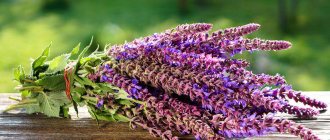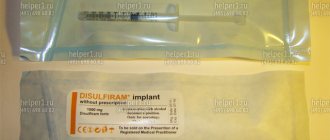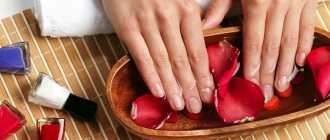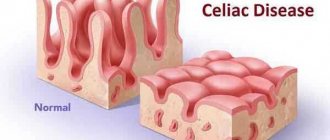Peppermint and its relatives
Mint has been known to our ancestors since ancient times. In Ancient Egypt, bunches of mint were placed in the tombs of the pharaohs, and in Greece it was considered a powerful aphrodisiac.
The scientific name itself (lat. Mentha) appeared thanks to ancient myths. According to one of them, the ruler of the underworld Hades fell in love with the young nymph Mentu. Hades' wife, the goddess of vegetation and fertility Persephone, in her anger turned the girl into mint.
The Hellenes used the leaves of the plant in funeral rites and to treat the sick. Long before the invention of menthol toothpastes, Hippocrates advised the use of mint infusion as a means of oral hygiene.
A few centuries later, in Ancient Rome, mint began to be used in a more utilitarian way: the leaves were rubbed on tables before festive dinners to ensure guests were in a good mood, and mint infusion was sprinkled on rooms and served to refresh the face.
From the Mediterranean, the aromatic herb spread throughout the world: first it came to the British Isles during military campaigns, and then further. In the 12th century, the first written mentions of mint appeared in Rus': here it was known under the names “dragolub”, “bezhava”, “perekop” and “chill”. A cooling infusion of mint (“jellied meat”) was used for hygienic purposes: they rinsed the mouth after eating and rinsed the body with it to give a pleasant smell.
Peppermint
Peppermint (lat. Mentha piperita) is the most common and widely used subspecies, which, surprisingly, is an artificially bred hybrid of wild water mint and spearmint many centuries ago.
This is the plant we imagine when we hear the word “mint”. It is used in cooking and medicine. For the manufacture of perfumes and cosmetics, two other types are more often used - Japanese and swamp mint.
Lemon Balm (Melissa)
There is another related plant that is sometimes confused with mint or called lemon balm. This is lemon balm (lat. Melissa) - a cousin of the usual peppermint, belonging to the same family of Lamiaceae. With a similar refreshing taste, lemon balm differs from peppermint with its bright lemony aroma.
Morphological description
The rhizome is horizontal, branched, with fibrous thin roots. The stem is straight, from 30 to 100 cm in height, hollow inside, and has 4 sides. The plant is characterized by a large number of lateral branches and leaves. The leaves are opposite, arranged crosswise, have an oblong-ovate shape and short petioles. The tips of the leaves are pointed, the base is heart-shaped and has a sharp-serrated edge.
The flowers are small in size, light purple in color, collected at the top in half-whorls, from which spike-shaped inflorescences are formed. Flowering occurs in the summer, from June to September. The fruit consists of 4 nuts and is formed quite rarely.
Methods for harvesting mint
Drying mint
Mint harvesting begins in June, after flowering begins, and continues until the end of July. It is best to collect mint bushes in the morning (after the dew has dried) or in the evening (from sunset to the dew), since high humidity can negatively affect the drying process.
Dirty and damaged leaves should be removed from the total mass, and the collection should be washed and dried thoroughly with a paper towel. Drying itself can be done naturally (in the fresh air) or accelerated (in the oven or microwave).
To dry naturally, the stems are tied into bunches and hung with the leaves down in a dark, dry place with good air circulation. Direct sunlight should be avoided when drying. Processing time is 2 to 3 weeks. As soon as the leaves begin to be easily removed from the stems, drying stops.
Drying in an open oven takes place at a temperature of no more than 75 degrees (at higher temperatures, the leaves lose all their beneficial qualities) for about 15–20 minutes. To prevent the leaves from drying out on the baking sheet, you need to cover it with parchment paper.
Dried mint can be stored for 1–1.5 years. To prevent it from losing its taste, you must use an airtight container made of glass, metal or plastic.
Freezing mint
Freezing mint allows you to preserve its taste and beneficial properties for a long period. For proper freezing, it is necessary to use fresh leaves without damage or stains. The leaves are placed in a bag or cling film, then sent to the freezer.
Mint syrup
Mint syrup is an excellent substitute for fresh leaves when added to tea, coffee and alcoholic beverages, and is also an ingredient in many confectionery products.
To prepare 200 g of syrup you need: 100 g of mint leaves, 250 g of sugar, a pinch of citric acid, 70 g of water.
Coarsely chop the mint, add 125 g of sugar and add citric acid. Leave for 8–10 hours for the leaves to release their juice. Pour 125 g of sugar with water, bring to a boil over low heat and simmer for 4-5 minutes until the sugar is completely dissolved. Pour the mint with the resulting syrup and leave to cool for 5-6 hours, then boil for about 5 minutes, strain through a fine sieve and pour into a pre-sterilized jar, as shown in the video.
-35%
70 rub. 107 rub.
Green tea Richard Royal Green, 25 bags
0 reviews
-15%
83 rub. 97 rub.
Curtis “Hugo Cocktail” green tea with additives, 20 pyramids
4 reviews
-15%
83 rub. 97 rub.
Curtis “Fresh Mojito” tea, green flavored, 20 pyramids
4 reviews
100 rub.
Ahmad tea “Maple Syrup”, green with maple syrup, 25 bags
3 reviews
-15%
83 rub. 97 rub.
Curtis Bahama Nights Green Tea with Additives, 20 Pyramids
3 reviews
-15%
83 rub. 97 rub.
Curtis "Delicate Mango" green tea with additives, 20 pyramids
3 reviews
-10%
383 rub. 425 rub.
Japanese green tea Origami Tea “Matcha”, powder, 50 g
4 reviews
Large selection of green tea at TEA.RU
When to collect and how to dry mint
The plant does not require careful care and special growing conditions, so many housewives grow grass in a flower pot. In this case, it is necessary to cut off the leaves during the ripening period several times a month.
Home-grown mint must be properly dried. There are several proven methods:
- Using an oven or dehydrator. The method is effective, but the product loses most of its beneficial properties.
- Hanging herb bunches in a well-ventilated, dark place.
- Dry the washed stems and leaves on a natural cloth away from sunlight.
You can store fresh leaves in the refrigerator by freezing them in ice cubes. At any time, the ice can be thawed and the herb can be added to a cocktail or tea. There is another way to store it - put the plant in a pot or vase with water. The grass will fill the room with a wonderful aroma. However, with this option, mint will not lose its properties and taste only for a week. In addition, it is necessary to change the water.
Mint tea recipes
Green tea with mint
A classic mint tea recipe, ideal for evening tea.
Ingredients
: 2 tsp. tea, 400 ml water and mint to taste.
Green tea with mint must be poured with water. Important: the water temperature should be no more than 80 degrees. Boiling water “kills” the flavor and aromatic properties characteristic of green tea and beneficial substances (flavonoids, catechins, vitamins and amino acids).
Moroccan tea
The world's most famous mint tea is made in Morocco. It was under the name “Moroccan tea” that the recipe spread throughout the world and became one of the most popular drinks for cool weather.
Ingredients
: 2 tsp. green tea (ideally gunpowder), a bunch of fresh mint, star anise, cinnamon and other spices to taste, sugar or honey, water.
Separately, brew green tea, and put mint leaves, spices and sugar in another container (a jug or a large cup), pour boiling water over it (if honey is used instead of sugar, it is better to add it to the finished, slightly cooled drink). Let the tea and mint steep, add tea to the jug and dilute with water if necessary.
Tea with mint and ginger
Ginger-mint tea is known for its medicinal properties and is especially useful during colds and viral diseases - both as a preventive measure and as a drink to maintain strength and restore immunity.
Ingredients
: 3 g of fresh grated ginger (or a little less dried, since dried ginger has a more pungent and pungent taste), mint to taste, water.
Pour boiling water over the mixture of ginger and mint, infuse to taste and let cool. You can add honey or sugar.
Use for women during pregnancy and lactation
If there are no contraindications and the doctor allows the use of mint preparations, they can be used to combat the nausea that accompanies toxicosis. But mint during pregnancy should be taken in very small doses, since pregnant women often develop allergic reactions to various plants.
It is believed that mint in small quantities improves lactation, and in large quantities it suppresses it, so in moderate quantities it can also be used by nursing mothers, again, if the attending physician and pediatrician allow it. You should also ask your doctor how much mint you can drink.
Side effects
- Therapy with mint preparations may be accompanied by general lethargy and drowsiness, so such treatment excludes the possibility of driving a car and working with precision mechanisms, which require increased concentration.
- Another unpleasant side effect for men is a decrease in potency. However, such a reaction is rarely observed with long-term treatment in large doses and especially in those who already had problems with potency.
- It is believed that mint reduces the ability to conceive.
- People with hypersensitivity may develop allergic reactions such as rash, dermatitis, and itchy skin.
- Excessive consumption of mint causes heartburn.
Author:
Sabuk Tatyana Leonidovna hygienist, epidemiologist
Chemical composition
The leaves contain B vitamins, carotene, vitamins D, E and PP. They are rich in calcium, phosphorus, manganese, iron, magnesium and copper. They contain other substances necessary for humans:
- glycine, arginine, other amino acids;
- betaine;
- glucose;
- phytosterol;
- organic acids;
- tannins,
- flavonoids,
- other biologically active components.
Peppermint essential oil is the main value of green shoots. It contains more than 40 unique chemical compounds. The main active ingredient is menthol. The substance is used in the perfumery and food industries, for the production of cosmetics and pharmaceuticals.
Plant for the human body in the photo
The beneficial properties of the spice have been studied by scientists and doctors for a long time. The spice copes well with some diseases and has a tonic effect due to its saturation with menthol.
In general, the benefits of the herb are as follows:
- normalization of nervous system functions: improvement of well-being, elimination of insomnia;
- treatment of diabetes mellitus;
- improving concentration of visual perception and attention;
- strengthening memory;
- regeneration of damaged cells;
- improved blood circulation;
- absorption of heavy metals and toxins with subsequent removal from the body;
- blocking putrefactive processes in the intestines;
- stimulation of the gastrointestinal tract.
Women
In particular, mint benefits the female body, which is why it received the name “female herb.” It eliminates toxicosis and significantly alleviates the unpleasant symptoms of menopause.
In addition, it is worth highlighting several more important properties:
- relieving various inflammations associated with the reproductive system;
- relief during menstruation;
- elimination of milk stagnation during breastfeeding.
The use of spice as a cosmetic product helps to narrow pores, remove oily sheen from the skin, smooth out fine wrinkles, and strengthen hair follicles.
For men
To a greater extent, the use of mint negatively affects the condition of the male body: decreased sexual desire and potency, decreased testosterone.
Therefore, men are recommended to drink tea from this plant exclusively for therapeutic purposes.
For children
Drinking mint-based drinks is contraindicated in children under 3 years of age. For children who are not very active, the dose is limited until they are 5-6 years old, since the herb causes drowsiness and lethargy. In addition, the grass can cause an allergic reaction in children.
Children are advised to instead prepare decoctions from the leaves and add them to baths. Such procedures provide a calming and relaxing effect, which is especially important before bed.
Is it possible to take lemon balm during pregnancy and breastfeeding?
During pregnancy and lactation, the use of mint and lemon balm without a doctor's permission is permissible exclusively as aromatherapy.
Upon consultation, a specialist may prescribe internal use of the plant to increase milk supply. In this case, the herb is mixed with oregano or dill seeds and taken in small doses.
For older people
Drinking mint tea by older people helps maintain good memory and mental clarity. In addition, the spice effectively eliminates headaches, increases the flow of bile, lowers blood pressure and improves visual function.
Oshi Burida
- 1 cup chickpeas
- 1 cup flour
- 3 carrots
- 2 onions
- 3 teeth garlic
- 1 bunch of cilantro
- 1 bunch of mint
- 1 bunch of parsley
- 1 bunch of dill
- 1 bunch of basil
- 1 bunch of wild garlic
- 1 bunch tarragon
- A few sprigs of rosemary, thyme and sage
- Salt and pepper
- Vegetable oil for frying
Step 1 . Soak the chickpeas overnight in hot water. After this, boil until tender (about 2 hours).
Step 2 . Chop onions and carrots. Fry in vegetable oil.
Step 3 . Knead the flour and 1/4 cup of water into a very stiff dough. Add 1/2 tbsp to it. l. vegetable oil.
Step 4 . Roll out the dough thinly and let dry a little. Meanwhile, fry onions, garlic and carrots (pre-finely chopped) in vegetable oil.
Step 5 . Roll the dough into a roll and carefully cut the noodles. The width of the strip is approximately 1 cm.
Step 6 . Place rosemary, thyme and sage (and other aromatic herbs, if any) in a saucepan with boiled chickpeas. Salt and pepper. Boil. If there is not much water in the pan, it is better to immediately add boiling water.
Step 7 . Add noodles to boiling soup. While it is cooking, quickly chop the greens (rather finely). Place in soup and turn off heat. Pour into plates, you can add sour cream or yogurt.
Pharmaceuticals
- Mint herb – used for preparing teas and infusions;
- Packaged mint tea, indicated for the conditions described above;
- Peppermint oil and menthol. They are sold in the form of independent dosage forms in bottles with a dispenser, and are also included in such drugs as Corvalol, Doctor Mom lozenges, Fitolor, Validol, Zelenin drops, Gevkamen, Menovazin, etc.
- Mint tablets that help with vomiting, nausea, gastrointestinal spasms;
- Dental drops, dental elixir.
In cosmetology
The use of peppermint in cosmetology serves the following purposes:
- cooling the skin and giving it freshness;
- elimination of inflammatory processes and irritation;
- antiseptic effect that promotes skin healing;
- normalization of the functions of the sebaceous glands;
- strengthening blood vessels, stimulating blood circulation;
- skin softening;
- elimination of acne.
How to use for hair growth?
A tincture made from peppermint is used as an irritant for hair growth. To do this, apply a small amount of the drug to the scalp and rub in lightly.
Increased blood flow in small capillary vessels stimulates hair growth.
For skin care
To care for the skin, brew 3 tablespoons of dry mint leaves in a glass of hot water and then leave for 30 minutes. The prepared infusion is used to treat the skin of the face daily.
A little history
The medicinal plant mint has a truly divine origin. It received its name in honor of the character of the ancient Greek myth, with whom a sad story is connected.
The goddess of Mount Mente became the concubine of Hades, the ruler of the kingdom of the dead, married to Parsephone. The love triangle, as usual, did not bring anything good. After all the ordeals, the girl was literally trampled either by her legal spouse, or by her mother - Demeter herself. The nymph turned into a tender plant with fragrant green leaves.
Mint was widely used by Arab, Chinese, and Japanese healers. Ancient healers and medieval scientists knew its medicinal properties very well. The ancient Romans noticed that the smell of mint lifts the mood and stimulates the thought process.
Today mint is grown everywhere. She is unpretentious and feels great in the garden and on the balcony. In my dacha it grows like a weed, but I can’t get up to weeding it out. Let's take a closer look at what's so useful about it.
Which is better: fresh or brewed dried herb leaves?
During the drying process of mint, some of its cells are destroyed, and the loss of moisture from the leaves entails a decrease in the concentration of vitamins. Even with the maximum adherence to technology in industrial production conditions, the plant retains no more than 40% of these elements. The mineral composition of dried herbs remains virtually unchanged.
Read here what methods of harvesting mint for the winter exist.
Folk remedies for weight loss
The herb is recommended for use as part of a diet, due to its many positive properties that are important for weight loss, namely:
- increased gastric peristalsis;
- stimulation of metabolism;
- prevention of fermentation and putrefactive processes;
- antispasmodic effect on intestinal smooth muscles;
- reducing the production of the hormone cortisone, which promotes the accumulation of visceral fat.
When losing weight, smoothies or tea are prepared using mint.
In addition, wraps are periodically performed using this plant. Such procedures contribute to irritation of thermoreceptors.
Harm
In addition to its medicinal properties, mint has several negative qualities:
- negative impact on male potency (with prolonged use);
- lowering blood pressure (the use of herbs is not recommended for arterial hypotension);
- increased load on the internal organs of children under 6 years of age.
Contraindications for internal use:
- pregnancy;
- breastfeeding period;
- individual intolerance;
- age up to 6 years;
- varicose veins;
- low pressure.
Why is grass dangerous?
In addition to its many positive qualities, peppermint, like any herbal preparation, can cause harm to health, namely:
- negative impact on the functioning of the male body - decreased libido and potency, breast enlargement, risk of obesity and infertility, prostate enlargement, malfunction of the cardiovascular system, neurosis, headaches, insomnia;
- possible problems for women associated with conceiving a child;
- the occurrence of an allergic reaction.
The use of peppermint has contraindications for a number of diseases:
- chronic hypertension;
- spasmophilia;
- bronchial asthma;
- severe ulcerative lesions of the liver and gastrointestinal tract.











